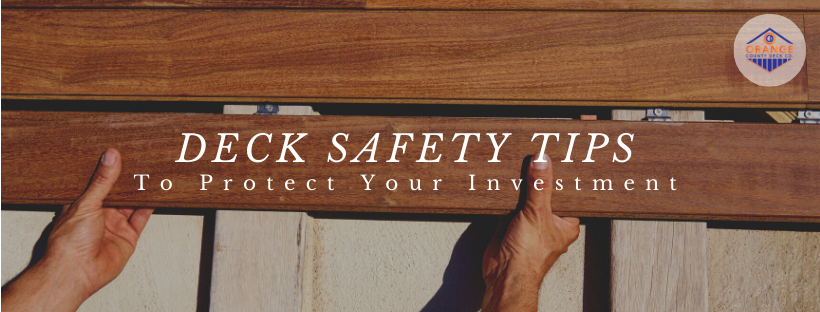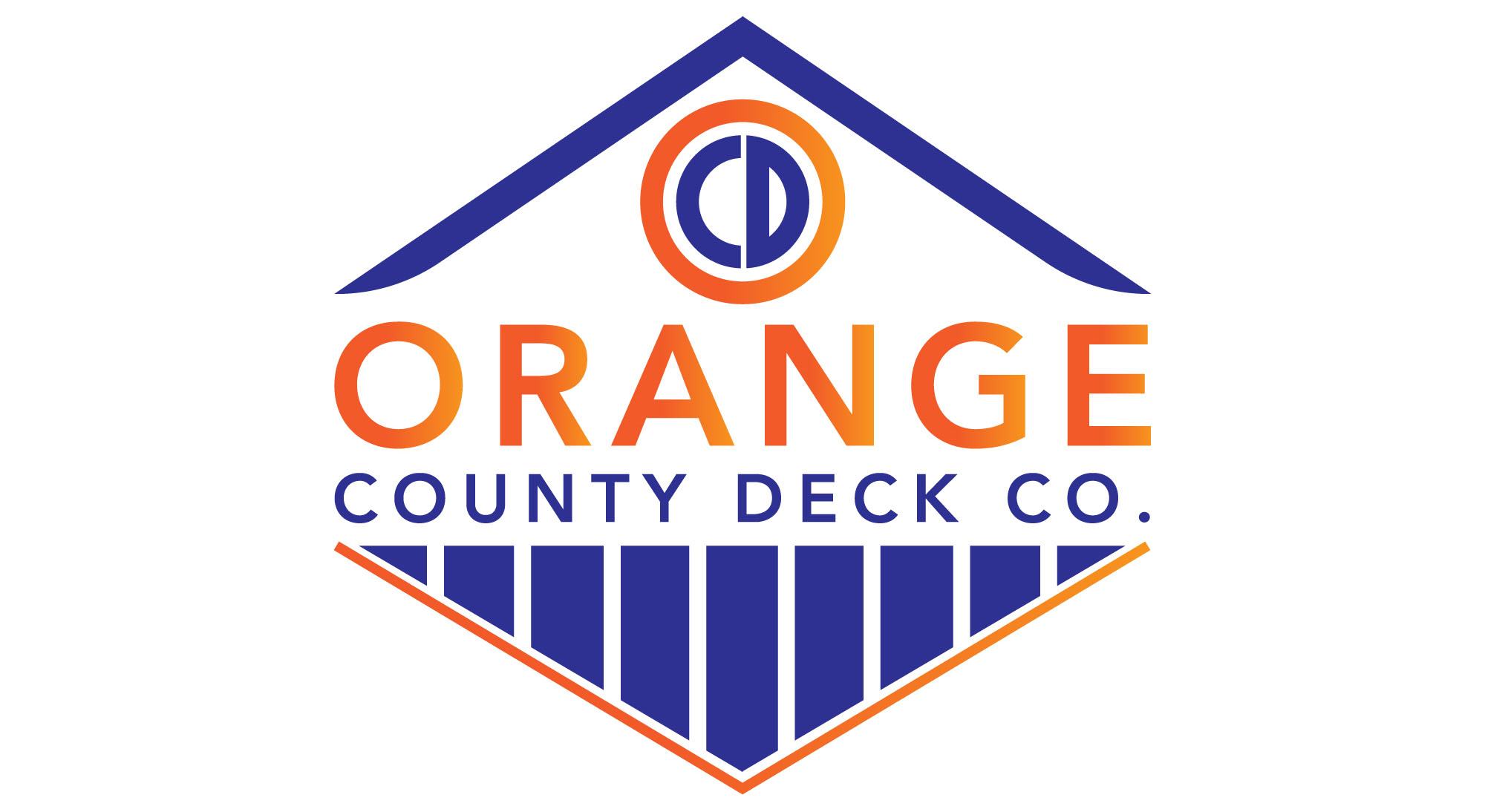Deck Safety Tips to Protect Your Investment

Every year, the North American Deck and Railing Association (NADRA) declares May as “Deck Safety Month” to help prevent deck-related injuries. Our team at Orange County Deck Company is proud to be NADRA Deck Safety Month ambassadors! Here are some of our top deck safety recommendations year round.
Your deck is an investment. If you want it to be safe and sturdy for the next 20+ years, it should be protected like any asset or investment!
Invest in High Quality Materials
Our top tip is a simple one. Invest in high quality materials! No matter if you’re building a new deck or replacing an existing one, you should always take careful consideration when it comes to material planning. You want a deck that will last a long time but also be easy to care for
We frequently run into a bit of initial sticker shock when a homeowner asks to see the price of Timbertech’s high end Azek decking material. It’s not cheap – and with good reason. It’s manufactured to last. This means it’s weather-proof, easy to take care of long term, scratch-resistant, and doesn’t decay under extreme conditions. It requires minimal upkeep while providing maximal safety and longevity.
If you’re not sure which material is the right choice for your deck, learn about your options here!
Keep Plants Clear of Your Deck
We’ve all been there. A plant that you thought would stay cute and small like when you bought it in a pot grows out of control in your yard. Generally speaking, this isn’t a bad thing – unless it’s encroaching on your deck’s structure.
All plants should be kept clear of your deck. A good standard to keep in mind is the larger the trunk of the plant, the larger the distance there needs to be between where you plant it and your deck. Run a quick Google search to be sure that you’re not planting anything too close before breaking out the shovels. Here are a few of the common concerns we run into while plants and decks:
- roots endangering structural anchors underground
- vines separating dissimilar materials at weak points
- ivy rotting the material beneath it
- bushes growing into railings
- broken bulbs in lighting fixtures
Check Connection Points Like Flashing
Deck flashing is made of metal or plastic and acts as a barrier to keep moisture out of openings and sensitive areas. It’s usually installed where the deck and house connect. NADRA recommends making sure your deck’s flashing is secure and intact. If there are obvious signs of water leaking or damage, it should be replaced.
But don’t wait for something to go wrong before replacing your deck flashing! The key to protecting your investment is to be proactive. Check any weak point (meeting of dissimilar materials) seasonally to be sure it is dry and well-maintained.
Treat Split Or Decaying Wood
The board where the house connects to the deck is called the ledger board, and the NDRA says it is a common source of deck failure. Check this and other boards to make sure there is no decay, whether from moisture or insect damage. The NDRA recommends using a tool, like an icepick or screwdriver to try to dig into the surface of the wood. If you can easily penetrate ¼ to ½ an inch, or break off a piece of the wood without splinters, that’s a red flag.
Ideally, you don’t want to get to the point where your wood deck is already damaged before you treat it.
Protect Against Heat Source Damage
An important, but often overlooked, element of deck safety isn’t just the structure of the deck, but what you put on it. Many people have grills, fire pits, heaters, and other sources of fire or heat, but they must be used safely and properly. Make sure fire/heat sources are far away from flammable surfaces, or that your deck is protected by a non-flammable pad.
The most recent National Fire Protection Association reported there are an average of about 9,600 home grill fires a year, leading to an average of 10 deaths, 160 injuries and $118 million in property damage. One of the leading causes is leaving a grill too close to something that can catch fire. So keep your grill a safe distance from your home or garage (the U.S Consumer Product Safety Commision recommends at least 10 feet).
Lighting Options for Dusk and Beyond
Lighting is a frequently overlooked aspect of deck remodeling and building. Especially when you call someone off of a sign shoved in the ground along the highway with nothing but a phone number.
But it’s an extremely important deck safety feature! No matter if the lighting is included along railings, stairs, or any elevation change, it’s a safety feature that you may not think of on your own until it’s too late.
If you already have lighting along your deck, be sure to check them every spring to ensure that there is no plant growth encroaching on the bulbs. This can cause a potential fire along with blocking out light.
Seasonal Maintenance and Care
A good way to remember when to take care of your deck is as the seasons change!
Deck care varies based on the type of material it was built with. Any synthetic material is generally very low maintenance and may only require a seasonal sweep and hose down. Pressure treated wood, however, my require more closely monitored preventative measures such as annual restoration or resurfacing. This is an instance where it truly depends on the quality of material and how active you are in taking care of concerns before they grow.
HIRE A PROFESSIONAL
While homeowners can, and should, inspect their own decks using professionally recommended guidelines (like this checklist), you should also make have your deck properly inspected regularly by a professional. They can not only flag trouble areas, but make sure it keeps up with safety code changes.
We take safety seriously, and perform thorough deck inspections for homeowners. Fill out the form on this page for a no-obligation consultation call!



